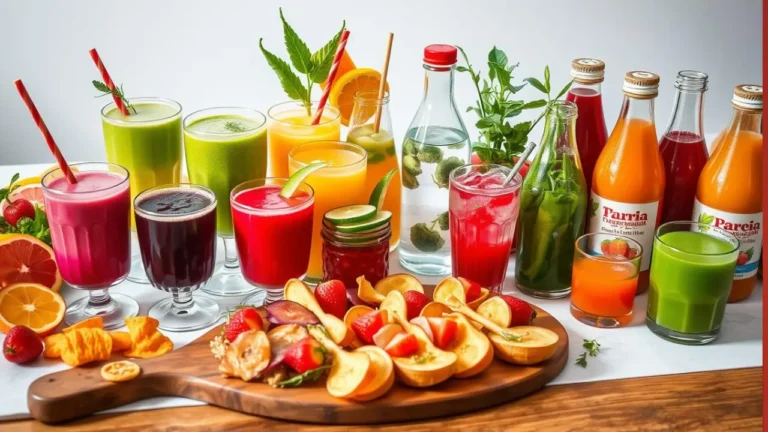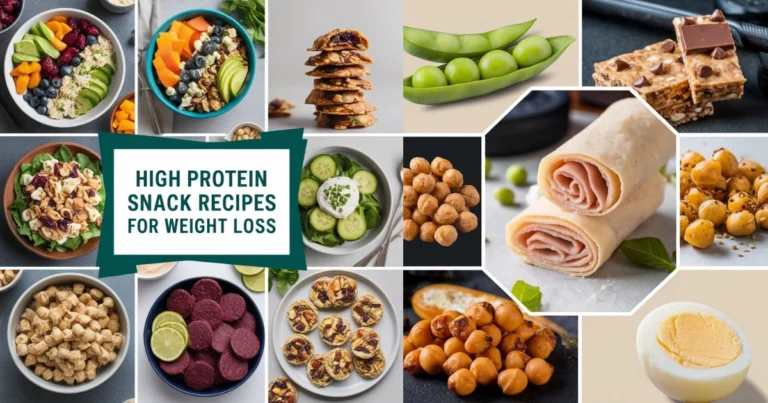Discover the 5 Essential Food Groups: Free Food Chart and Groups List PDF
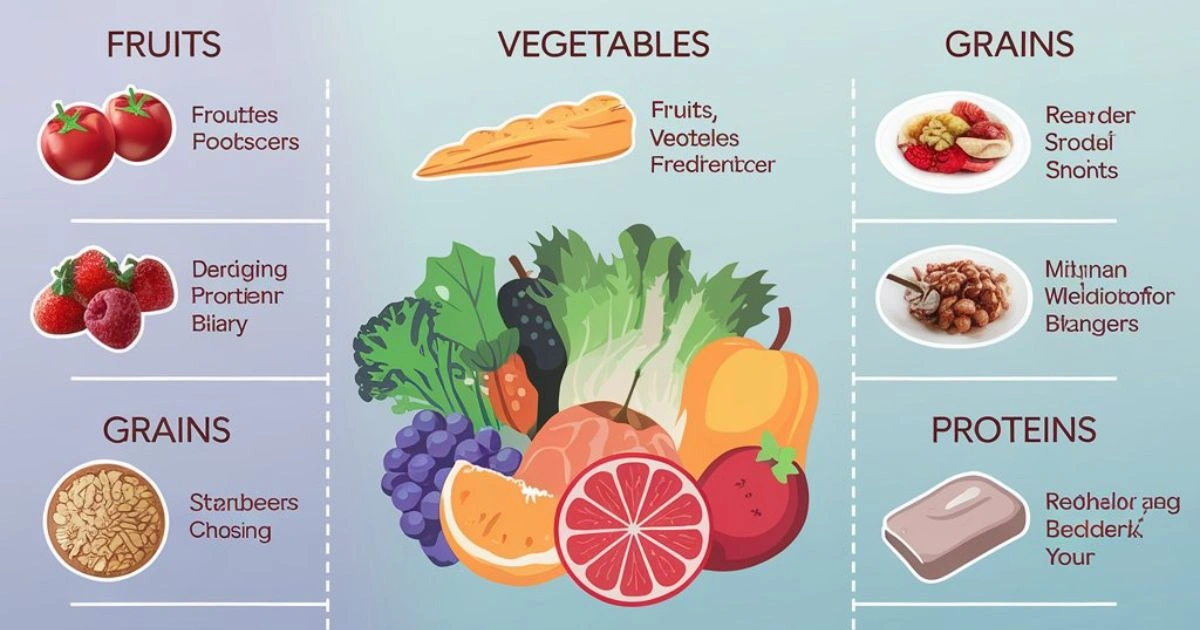
Eating a well-balanced diet is one of the most important things you can do to maintain a healthy lifestyle. The foundation of good nutrition lies in understanding the 5 essential food groups and how they contribute to your overall well-being. These groups are the building blocks of a balanced diet, each providing vital nutrients that your body needs to function optimally. Whether you want to lose weight, gain muscle, or simply feel healthier, having comprehensive knowledge of these food groups is essential.
Table of Contents
In this article, we will dive into the 5 essential food groups and offer you a free downloadable Food Chart and Groups List PDF to make healthy eating easier. Understanding these food groups will help you make smarter food choices and ensure that your meals are nutritious and balanced.
1. Introduction to the 5 Essential Food Groups
The concept of food groups is not new; it has been part of dietary guidelines for decades. The idea is simple—different foods provide different nutrients, and no single group can offer everything your body needs. That’s why it’s important to eat a variety of foods from all five groups. These groups are: Groups List PDF
- Fruits
- Vegetables
- Grains
- Protein Foods
- Dairy
Each group plays a specific role in your overall health, supplying your body with vitamins, minerals, fiber, and other nutrients. By incorporating foods from all these categories, you’re ensuring that your body gets everything it needs to thrive.
2. Why You Need a Balanced Diet
A balanced diet is essential for maintaining good health, preventing chronic diseases, and ensuring your body has the energy it needs to perform everyday activities. But what exactly is a balanced diet? In short, it’s one that includes the right proportion of foods from all the essential food groups.
Each food group provides different nutrients. For instance, fruits and vegetables are rich in vitamins and minerals, while grains supply energy in the form of carbohydrates. Proteins are essential for muscle repair and growth, and dairy provides calcium for strong bones. A diet lacking in any of these food groups can lead to nutrient deficiencies, fatigue, and long-term health issues.
A balanced diet not only helps with physical health but also impacts your mental well-being. Proper nutrition has been linked to improved mood, better focus, and enhanced memory. Groups List PDF
3. The Role of Each Food Group
a) Fruits
Fruits are a powerhouse of essential nutrients, including vitamins, minerals, and antioxidants. They are a vital part of any healthy diet and should be consumed daily. The benefits of eating fruit are numerous:
- Rich in Fiber: Fruits like apples, berries, and pears are high in dietary fiber, which helps regulate digestion and maintain bowel health.
- Loaded with Vitamins: Citrus fruits, such as oranges and lemons, are high in vitamin C, an antioxidant that boosts your immune system.
- Low in Calories: Most fruits are low in calories, making them an excellent choice for snacking or adding to meals without overloading on calories.
It’s important to vary your fruit intake to ensure you’re getting a wide range of nutrients. Try to consume a mix of colors, as different pigments in fruits often indicate different health benefits.Groups List PDF
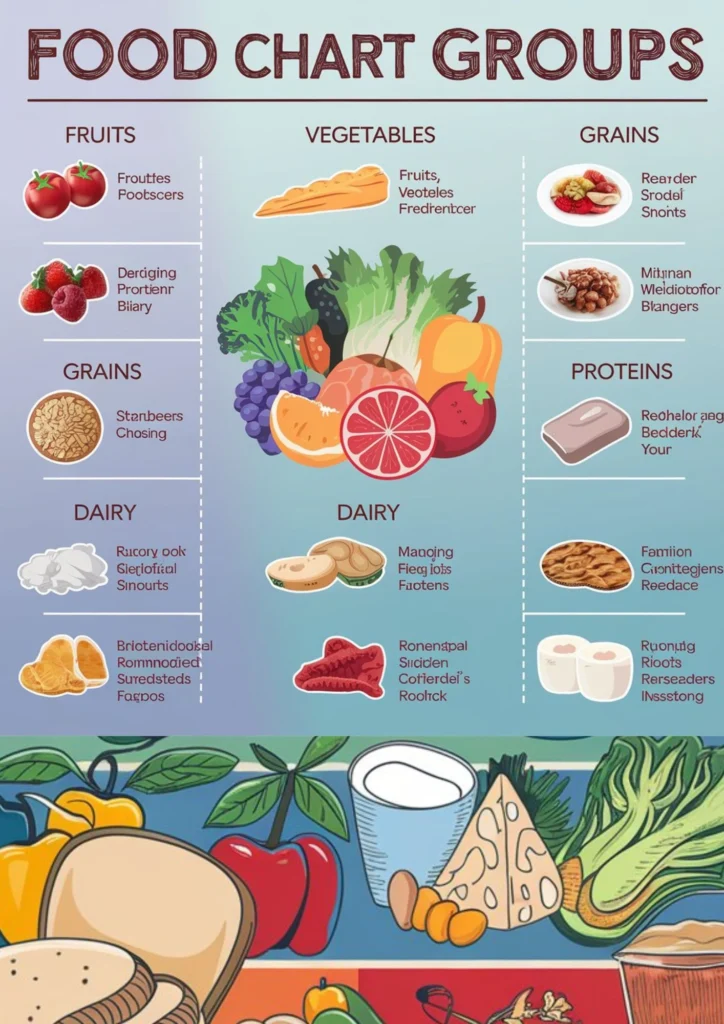
b) Vegetables
Vegetables should make up a large portion of your daily food intake, and like fruits, they are packed with essential vitamins, minerals, and fiber. Vegetables fall into several sub-categories, including: Groups List PDF
- Leafy Greens: Spinach, kale, and lettuce are rich in iron and calcium.
- Cruciferous Vegetables: Broccoli, cauliflower, and Brussels sprouts are high in fiber and contain cancer-fighting compounds.
- Root Vegetables: Carrots, sweet potatoes, and beets are loaded with vitamins like A and C.
Vegetables are naturally low in calories and fat, making them ideal for maintaining a healthy weight. They are also high in water content, which helps keep you hydrated.
c) Grains
Grains are the body’s primary source of energy. They are divided into two categories: whole grains and refined grains. Whole grains, such as oats, brown rice, and whole-wheat bread, retain all parts of the grain and provide more nutrients than refined grains. Groups List PDF
- Whole Grains: These are rich in fiber, B vitamins, and minerals like iron and magnesium. Eating whole grains can reduce the risk of heart disease, diabetes, and digestive problems.
- Refined Grains: These have been processed to remove the bran and germ, which strips away much of the fiber and nutrients. While refined grains like white bread and pasta are still a source of energy, they are less nutritious than whole grains.
Aim to make at least half of the grains you eat whole grains for better health outcomes.
d) Protein Foods
Proteins are essential for building and repairing tissues, producing enzymes and hormones, and supporting overall growth and development. Protein foods can be animal-based or plant-based:
- Animal Proteins: These include meat, poultry, fish, and eggs. Animal proteins provide all the essential amino acids your body needs but should be consumed in moderation due to their high saturated fat content.
- Plant-Based Proteins: Beans, lentils, tofu, and nuts are excellent sources of protein, especially for those following a vegetarian or vegan diet. These foods are lower in fat and contain fiber, which helps with digestion.
A balanced intake of protein from both plant and animal sources is ideal for a healthy diet. Groups List PDF
e) Dairy
Dairy products, such as milk, cheese, and yogurt, are rich in calcium, vitamin D, and protein. These nutrients are crucial for building and maintaining strong bones and teeth.
- Calcium: Vital for bone health and muscle function, calcium is found in high quantities in dairy products.
- Vitamin D: This nutrient helps your body absorb calcium more efficiently, making it just as important as calcium for bone health.
- Probiotics: Yogurt and fermented dairy products contain probiotics, which promote a healthy gut by encouraging the growth of beneficial bacteria. Groups List PDF
For those who are lactose intolerant or prefer not to consume dairy, there are plenty of alternatives, such as almond milk, soy milk, and lactose-free products that provide similar benefits.
4. How to Balance Your Plate with the 5 Essential Food Groups
Balancing your plate means including foods from all five essential food groups in every meal. Here’s a simple guide to help you create balanced meals: Groups List PDF
- Fruits and Vegetables: Fill half your plate with fruits and vegetables. They should make up the largest portion of your meal.
- Grains: One-quarter of your plate should be grains, preferably whole grains like brown rice, quinoa, or whole wheat pasta.
- Protein: One-quarter of your plate should be protein. Choose lean sources such as chicken, fish, beans, or tofu.
- Dairy: Include a serving of dairy or a dairy alternative, such as a glass of milk or a serving of yogurt.
By following this plate method, you’ll ensure that your meals are nutritionally balanced and that you’re consuming foods from all five essential groups. Groups List PDF
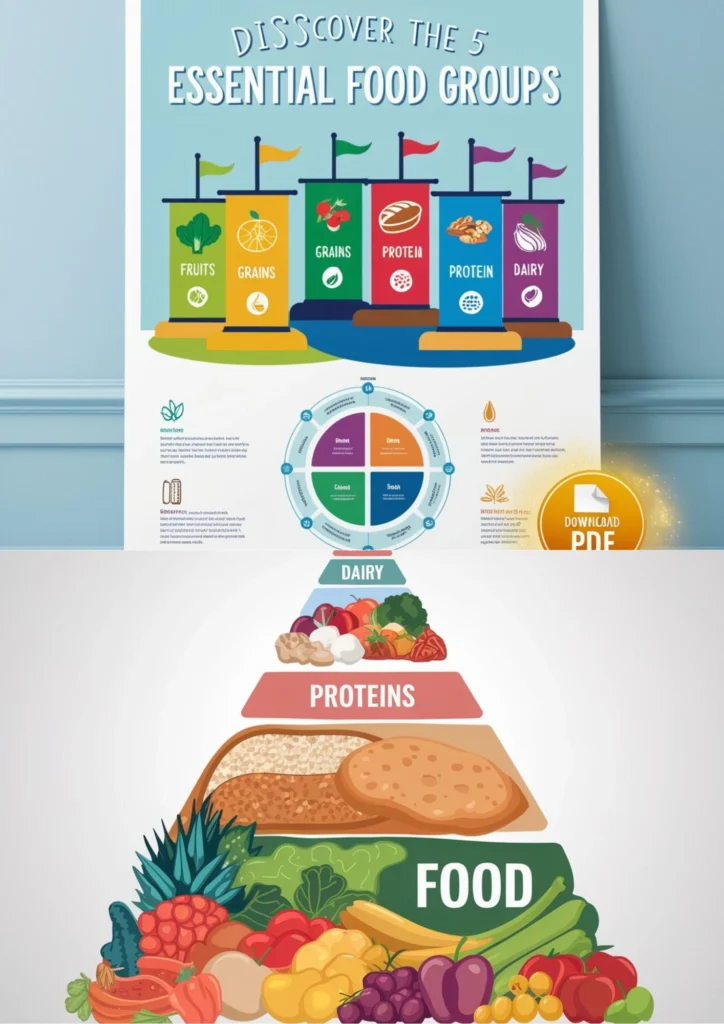
5. Download Your Free Food Chart and Groups List PDF
To help you make healthier food choices, we’ve created a Free Food Chart and Groups List PDF. This chart includes a detailed breakdown of the essential food groups, along with examples of foods in each category and recommended portion sizes.
Simply download the PDF to have a handy guide to the 5 food groups at your fingertips. Use it to plan meals, make shopping lists, and ensure you’re eating a balanced diet every day.
Download Free Food Chart and Groups List PDF Now
6. Benefits of Following a Balanced Diet
Eating a diet that includes foods from all five essential food groups has numerous benefits for your health:
- Weight Management: A balanced diet helps regulate your calorie intake, preventing overeating and promoting a healthy weight. Groups List PDF
- Reduced Risk of Chronic Diseases: A diet rich in fruits, vegetables, whole grains, and lean proteins can lower your risk of heart disease, diabetes, and certain cancers.
- Improved Digestion: Fiber from fruits, vegetables, and whole grains promotes healthy digestion and prevents constipation.
- Better Energy Levels: By eating a variety of foods, you provide your body with a steady source of energy, helping you feel more energetic throughout the day.
- Stronger Immune System: The vitamins and minerals found in a balanced diet help strengthen your immune system, protecting you from illness.
7. Common Mistakes to Avoid When Eating from the 5 Food Groups
While it’s important to eat from all five food groups, there are some common mistakes people make that can hinder their efforts:
- Overeating Refined Grains: Stick to whole grains as much as possible, as refined grains have been stripped of many nutrients.
- Not Eating Enough Vegetables: Vegetables should make up a significant portion of your daily diet. Many people don’t eat enough of them. Groups List PDF
- Ignoring Plant-Based Proteins: Even if you eat meat, don’t forget about the benefits of plant-based proteins like beans, lentils, and tofu.
- Overconsumption of Dairy: While dairy is important for calcium, too much can lead to high calorie and fat intake. Opt for low-fat or fat-free options when possible.
8. How to Incorporate the 5 Food Groups into Your Daily Meals
Incorporating all five food groups into your meals can seem overwhelming at first, but with a little planning, it becomes second nature. Here are some tips to get started:
- Breakfast: Include whole grains like oats, a serving of Groups List PDF




